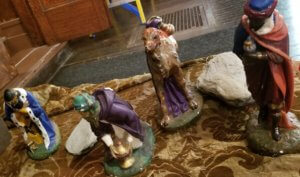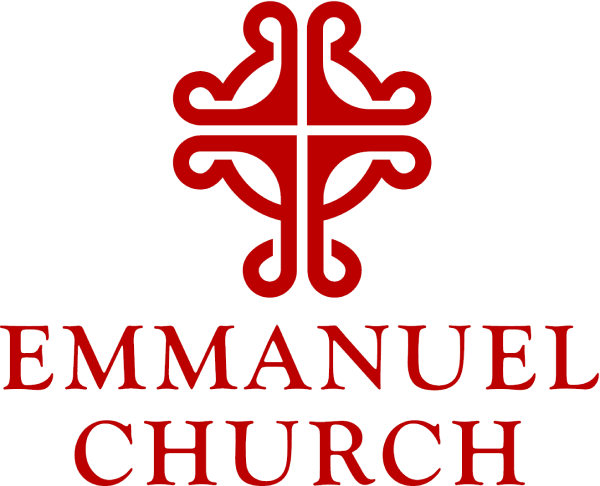
A Cold Coming We Had of It: The Most Excellent Journey of the Magi
 We have now come to my very favorite place in the church year. Tomorrow is Epiphany, when we celebrate the arrival of the magi — also often called the three kings, or the wise men — at the side of the manger to greet Jesus, the baby king.
We have now come to my very favorite place in the church year. Tomorrow is Epiphany, when we celebrate the arrival of the magi — also often called the three kings, or the wise men — at the side of the manger to greet Jesus, the baby king.
While the magi have developed larger than life presence in Christian and even cultural tradition, including hymns, art, our nativity scenes, and even Christmas pageants, all of what we actually know about the magi from the canonical gospels is expressed in no more than 18 verses, roughly 60 lines of text. Exactly what we know about them from that text is also limited. They exist only in Matthew’s gospel, and only the specific verses we read this morning.
Yet these guys are really important. They clearly arrest the attention not only of Herod but of all those in the area as they arrive in Jerusalem asking about the king of the Jews. When Herod hears that the magi are looking for the child who has been born King of the Jews, he “was frightened, and all Jerusalem with him.” The magi also have sufficient reputational cachet or professional expertise to warrant Herod’s secret summons to court for a private consultation upon their arrival into town, along with a commission and engagement for a follow up report.
Not only do the magi occupy the thoughts and actions of Herod and all Jerusalem from the time of their arrival in Jerusalem until a full eight verses after they’ve left the scene, they’ve held our attention over roughly twenty centuries — a LOT of attention, given they really aren’t hanging around in Matthew’s gospel all that long. Just like we get all the detail about the animals present at Jesus’ birth from the mention of the manger, the food dish for animals, we have imagined our own details about the magi. What we know is that the magi lead us to Jesus and point to his divinity and kingship, and the mystery and ambiguity surrounding their identity — and where in the world they came from — allows them to assume different nations, races, and religions.
Where Are the Magi From?
What we DO know is that they came from afar — they’re not from the home office of the Roman Empire, or Herod wouldn’t be so worked up about their arrival. And they’re not from Bethlehem, from the shepherds’ fields, or even from Nazareth, where Mary and Joseph are from. The magi turn up in Jerusalem asking, “Where is the child who has been born king of the Jews?” They say that they saw his star at its rising. The magi follow the star to Bethlehem until it stops right over the place where the child was, where they find Mary and Jesus. Once inside, the magi knelt down and paid him homage, gave Jesus their gifts, and returned to their own country.
So who are these magi? Matthew tells us that they’re from the East. Jerusalem — and Bethlehem — are already in the Middle East, from our Western perspective, although I’ve also heard it referred to as West Asia. The magi say that they saw Jesus’ star at its rising — somewhere far east of Jerusalem —so they must know at least a little about astrology.
The word used for them in Matthew’s gospel — magos — can mean a number of things: a Persian, a Babylonian, and also a wise man and priest, who was expert in astrology, interpretation of dreams and various other occult arts. Magos can also mean magician, and we also know that the magi are interpreters of dreams. Remember they have a dream that tells them not to return to wherever they came from via Jerusalem and Herod — they go back by another road.
The Magi are Important
The way Herod reacts when they show up in Jerusalem shows us that the magi are important. Herod immediately summons them to court, which he isn’t likely to have with any old strangers who might have had the status of carnival workers, performers, or magicians. We can tell that the magi have enormous street cred from Herod’s response to them, as well as from the gifts they bring and the purpose they name for their visit: The magi are diplomats who recognize and pay homage to a foreign power with gifts and a state visit. The magi are the ones in Matthew’s gospel who introduce us to the sacred.
But who they are, and where they are from, is a mystery to us even now. We do not even know from the text that there are three magi; we infer that from the three named gifts (gold, frankincense, and myrrh) they bring, costly gifts for anyone other than a foreigner of great importance. The magi show up in Bethlehem beside Mary and Joseph and Jesus and the shepherds — and we see beside the manger:
-country and kings’ courts,
-riches and poverty,
-simplicity and complexity,
-and familiar and foreign, all together around the newborn God in human skin.
The magi — known experts in stars and dreams — arrive in Jerusalem by the light of a star, to both have and interpret a dream. This all happens in Matthew’s gospel where prophetic dreams are occurring at a rate of about one every twenty lines or so in just the first two chapters. The magi are just the right folks for the job.
Outsiders
Similarly, the magi are apparent outsiders at Jesus’ birth — who by their travel, their gifts, their dignity, and their presence — point to Jesus’ divinity and kingship. The magi arrive in Jerusalem, the seat of the current king and therefore a logical place to look for the new one, asking a simple question: where is the baby king? Herod’s response, after he has gathered himself and “all of Jerusalem” from their collective agitation at the arrival of the magi, is to deploy his own staff’s expertise to research the prophecy and then direct the magi to Bethlehem.
The magi have told Herod nothing that he didn’t have in his own wheelhouse all along, but they have signaled to him, and to Matthew’s subsequent audiences, the importance of this watershed event in the history of God’s people. The magi appear as foreigners or social outsiders to all readers of Matthew’s gospel, even Matthew’s original intended audience, because they are specifically presented as outsiders. Their foreignness unchangeable.
Matthew’s description of them is so bare that we can’t begin to figure out where they’re from, or their culture or even their function in their home environments. Even so, God speaks to them in a dream, sending them home by another road to escape Herod’s treachery. Is this Matthew’s hint? That maybe the magi are not really foreigners at all, at least not to God and God’s plan?
Their exotic name of magi, their “Eastern” origin, and their expertise in star-gazing (or at least star-following) focuses our attention on the important way in which they are foreign, or different, from Herod and his court in Jerusalem: ONLY the magi come asking for the baby king, fully prepared with gifts, to pay him homage. The mysterious origin and social function of the magi give all audiences a chance to walk along in their sandals as they journey to Jesus and away from Herod’s reign in Jerusalem. No one is excluded from the group gathered around Jesus at the manger, as we have no idea what that group might even be.
Even if the magi came from an East no farther from Jerusalem than Bethphage or Bethany, their foreignness to the regime in Jerusalem allows anyone, any one of us, to walk as magi to Bethlehem to pay homage to the baby king.
Camels
 And you probably know already that I’m not going to stop until I’ve mentioned camels! You know that’s coming, right? Who else besides Mary, Joseph, the baby Jesus, the shepherds, the angels, and the magi are beside the manger in Bethlehem? Mary was very pregnant when she and Joseph started the two-day or longer walk from Nazareth to Bethlehem, so there must have been a donkey so she could ride part of the way. Also, in Bethlehem, when Jesus is born, Mary lays him in a manger — a food dish for animals, so we’ve always imagined that there must have been cows at the birth. And shepherds show up there after the multitude of angels appears in the sky over the fields where they tended their sheep. They must have brought their sheep with them to the manger — they couldn’t have left them alone in the fields, right?
And you probably know already that I’m not going to stop until I’ve mentioned camels! You know that’s coming, right? Who else besides Mary, Joseph, the baby Jesus, the shepherds, the angels, and the magi are beside the manger in Bethlehem? Mary was very pregnant when she and Joseph started the two-day or longer walk from Nazareth to Bethlehem, so there must have been a donkey so she could ride part of the way. Also, in Bethlehem, when Jesus is born, Mary lays him in a manger — a food dish for animals, so we’ve always imagined that there must have been cows at the birth. And shepherds show up there after the multitude of angels appears in the sky over the fields where they tended their sheep. They must have brought their sheep with them to the manger — they couldn’t have left them alone in the fields, right?
Have you ever seen a nativity scene without camels? Camels are mentioned many times in scripture, but they actually are not mentioned anywhere in this passage from Matthew about the magi. But what other creature could point to the mystery and distance of the magi like the camel? They are the ships of the sand sea, uniquely and improbably built to maneuver perfectly over desert terrain. If there are magi, there must have been camels.
I ask you — if you needed transport from afar in the East 2000 years ago, following a star to get yourself to the manger-side of the baby, born King of the Jews, how would you get across the rough Judean hills, deserts, and rocky plains to Bethlehem? You’d need a uniquely fitted cargo vehicle, because you’re carrying gifts of gold, frankincense and myrrh, right? And one that had great big sand transport feet, ears filled with soft, protective fur, and long eyelashes and nostrils that close against sand storms might be just the ticket, especially if it could go for two days without food or water.
From specs like that, would any human engineer have drawn a camel? No. Only God. Amen
